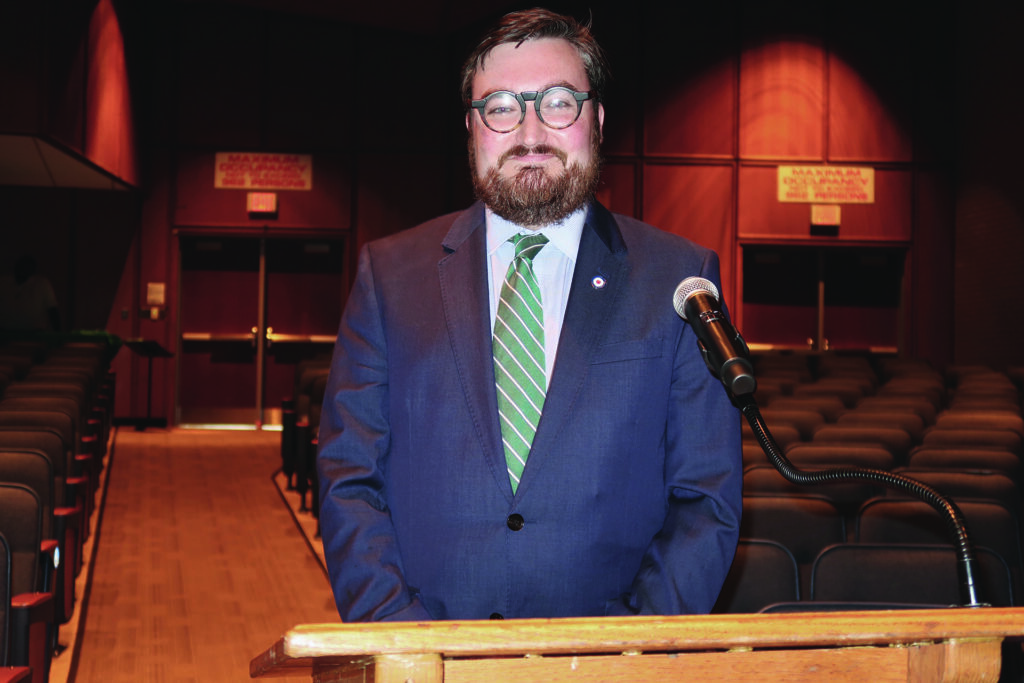Redistricting changes landscape of local Assembly districts; Dems can seize 1st Congressional District

Gov. Kathy Hochul signed into law last week redistricting maps that would reshuffle congressional and state representation on the North Fork.
Under new district lines, Southold Town will fall under the representation of Fred Thiele (I-Sag Harbor) in Assembly District 1, rather than Jodi Giglio (R-Baiting Hollow) in District 2. Riverhead Town will remain in Assembly District 2 and Shelter Island will remain in District 1. The North Fork is relatively unaffected by redrawn state senate lines. A portion of District 2 will now extend farther east to include a small portion of Calverton.
Southold Town Supervisor Scott Russell said he is “vehemently opposed to the new district boundaries.”
“I have a great deal of respect for the current assemblyman from the 1st District; however, many of the issues that face the North Fork differ from those of the South Fork and I fear our voices will be eclipsed by the deeper-pocketed voices of the South Fork,” he said. “We need North Fork representation for North Fork residents. I expect Assemblywoman Giglio to vote to protect our interests.”
Mr. Thiele, who voted in favor of the new redistricting plan for the State Legislature, said in a Feb. 8 press statement that districts should combine “communities of interest” when possible and he is “pleased to represent the Town of Southold.”
“Southold is part of that ‘community of interest’ that I have always thought should be Peconic County, the five East End towns of Suffolk County,” he said. “East End residents voted for Peconic County in 1995 only to have the creation of the new county blocked by then Assembly Speaker Sheldon Silver.”
He pointed out that Southold is also part of the Peconic Bay Region Community Preservation Fund Law, the Peconic Estuary Program and the East End Supervisors and Mayors Association.
“I have always worked closely with my colleagues in Southold and collaborated on behavioral health initiatives in our schools that have been successful. Southold is also part of the same State Senate and Congressional district as the South Fork and Shelter Island,” he said. “While every town is different and unique, there is no doubt that Southold, together with Shelter Island, East Hampton and Southampton, collectively share an East End heritage based on our mutual agricultural and maritime traditions. We also share a passion for protecting the community character that together makes us so different from the rest of Long Island.”
He said separating Riverside and Northampton from the Town of Southampton in his district “was a mistake.”
“I recognize that this area is part of the Riverhead School District, the Riverhead postal district, and is closest to downtown Riverhead. That is also a community of interest,” he said, adding that “it goes without saying that in the future the redistricting process requires further reform and accountability.”
Ms. Giglio criticized the legislature for not following the constitutional amendments approved by New York voters in a 2014 referendum. The process “was not carried out to the letter of the law as the voters voted on it,” she said; therefore, she did not vote for the plan.
The Independent Redistricting Commission should have been allowed to come up with a second set of maps, she said, adding that the legislature wanted to approve redistricting lines quickly to avoid pushing back primaries. If those maps had been rejected, then the legislature would have had to draw them, she said.
According to the IRC website, if the first redistricting plan is not passed, the commission should have until no later than Feb. 28 to submit a second plan for approval. The IRC website only includes a set of plans submitted to the state legislature on Jan. 3 and draft plans published in September. Gothamist has reported the IRC failed to come up with a revised proposal, paving the way for state lawmakers to draw the maps themselves.
“I’m very upset about losing Southold from my district,” Ms. Giglio said. “I spend a lot of time in Southold, I’ve gotten to know a lot of members of the community. I’m disappointed but I’ll continue to help the members of Southold to make sure all of their needs are met.”
The state’s redrawn 1st Congressional District, currently represented by Rep. Lee Zeldin (R-Shirley), favors the Democratic party. Mr. Zeldin did not respond to a request for comment before this article was published.
NY-01 no longer includes swaths of the South Shore, with part of the district’s southern border cutting through the middle of Suffolk County and the western border through the center, passing the border into Nassau. The North Fork is still included in the district.
Interactive before and after maps of redrawn congressional and state assembly and senate lines are available at newyork.redistrictingandyou.org.
New York is losing one of its 27 congressional seats after a population drop in the 2020 census. The newly-passed districts strongly favor the Democrats, with the party gaining another three seats, according to political analysis outlet FiveThirtyEight. There are currently 19 Democrats and eight Republicans in New York’s Congressional delegation.

Fourteen New York residents have already filed a lawsuit against the approved congressional districts, which — left as is — will likely flip the Republican-held 1st, 11th and 22nd districts, according to FiveThirtyEight. The 67-page Republican-led suit accuses Democrats of gerrymandering and argues the new lines violate a 2014 amendment to the state constitution meant to protect against partisan district drawing.
“In the very first redistricting cycle after these landmark constitutional amendments, the Democratic Party politicians who control the New York Legislature and Governor’s office brazenly enacted a congressional map that is undeniably politically gerrymandered in their party’s favor,” the suit says.
It points to an analysis from FiveThirtyEight, which calls the map “egregiously biased,” and says it was “only possible because of the weakness of New York’s new bipartisan redistricting commission.”
“Under state law, the legislature may simply draw its own map after rejecting the commission’s first two proposals,” the site says. “Even worse, the commission didn’t even work as intended. Its first proposal was actually two maps (one favoring Democrats and one favoring Republicans), and it failed to come to any agreement on a second-round proposal, handing redistricting control to the legislature by default.”
Mr. Zeldin has thrown his hat into the 2022 gubernatorial race, leaving his seat in the House of Representatives up for grabs. With no incumbent in office and a new, more left-leaning voter demographic, the Democratic Party seems to have high hopes for winning the district.
“New York’s 1st Congressional District will be one of the top Democratic pickup opportunities in the country,” Kelly Hardon, campaign manager for County Legislator Kara Hahn (D-Setauket), said in a Feb. 3 press release. County legislators Ms. Hahn and Bridget Fleming (D-Noyack) are both competing for their party’s nomination to run for the seat.
Ms. Fleming similarly said in a tweet after new district lines were released that NY-01 “is one of the best pick-up opportunities in the country.”
Ms. Hahn tweeted that the redrawn district lines do not change “the need to flip this seat in order to hold onto” a Democratic House majority.
Republican candidate Robert Cornicelli tweeted in a reply to Dave Wasserman, an editor at Cook Political Report, that the “exceptional Dem pickup opportunity” in NY-01 — as Mr. Wasserman put it — “won’t happen.”
Redistricting takes place every 10 years, after the national census. Districts are redrawn based on population changes. The location of district lines determines congressional and state representation.
Gerrymandering is when redistricting is used to manipulate electoral outcomes or discriminate against certain groups, according to the American Civil Liberties Union.
New York’s legislative lines have been drawn by an independent commission since 2014, according to resources from Loyola Law School. The guide notes the lines are “subject to modification by a supermajority of the state legislature.”
A member of the commission sued the state over staffing and funding in March 2021.








